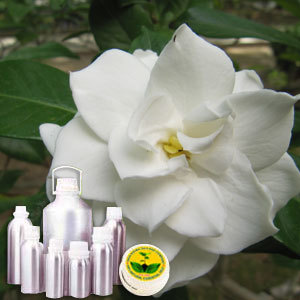Botonical Name | : | Gardenia jasminoides | |
CAS # | : | 24512-62-7 | |
Country of Origin | : | China | |
Color & Odor | : | Greenish brown with sweet floral,rich, exquisite scent | |
Solubility | : | Insoluble in water, soluble in alcohol and oils. | |
Specific Gravity | : | 0.950 - 0.960 @ 20 °C | |
Optical Rotation | : | (-)1.5 –(-)4 @ 15°C | |
Refractive Index | : | 1.479 to 1.494 @ 20 °C | |
Flash Point | : | >100°C | |
Plant Part Used | : | Flowers | |
Extraction Method | : | Steam Distillation |
DESCRIPTION:
Gardenia Oil is obtained from the freshly picked petals of gardenia flowers. The obtained floral oil has long lasting and pleasant smell. The fragrance of gardenia flower is quite similar to the aroma of white rose. These flowers blossom in the middle of spring and continue to bloom till midsummer days. This plant has dark green leaves with lustrous and leather like surface. CONSTITUENTS:
Gardenia oil contains compounds like linalyl acetate, linalool, methyl anthranilate, phenyl acetate, terpineol and benzyl acetate. AROMATIC SUMMARY / NOTE / STRENGTH OF AROMA:
This essential oil has soothing and pleasant floral smell which is intoxicating and intense as well. BLENDS WITH:
Gardenia Essential Oil easily mixes with all sorts of citrus oils, Neroli, Ylang Ylang, spice oils, Rose and Jasmine oils. COMMON NAMES:
This oil is commonly referred as Gardenia oil. USES:
Obtained from flowers of gardenia plant, Gardenia oil has extensive applications in perfume making industry where it is required to produce scents and other fragrant items. Its application can also be noticed in aromatherapy. 


































